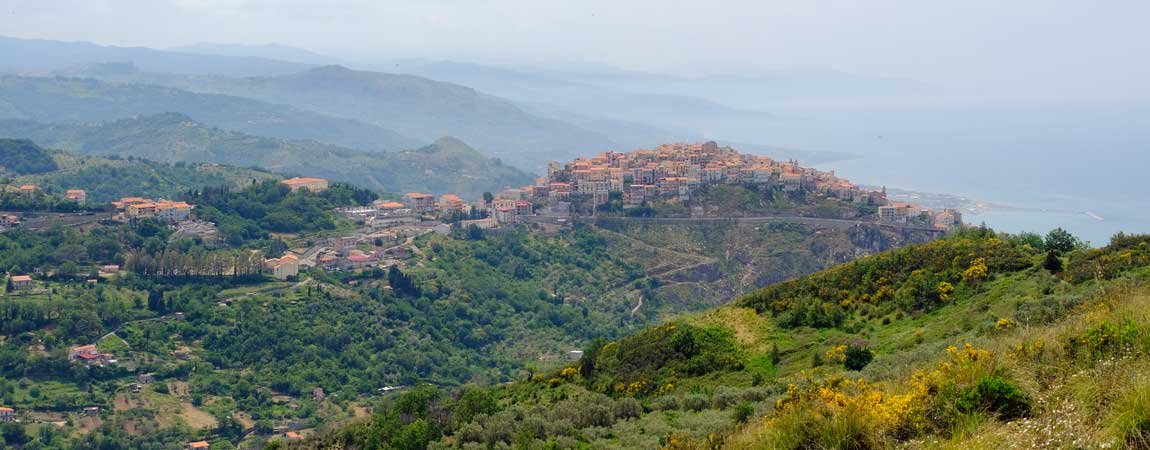
Italy is very rich in enchanting villages and many of these are located in Sicily, such as San Marco d'Alunzio: this small village, part of the Metropolitan City of Messina, is a small jewel located at the top of Monte Castro, at 548 meters high, right in the heart of the wonderful Nebrodi Park.
In addition to the panorama that can be enjoyed from the village, with the view that ranges from Cefalù to Capo d'Orlando up to the Aeolian Islands, the historical heritage preserved here is truly important.
What to see in the village of San Marco d'Alunzio
According to Dionysius of Halicarnassus, it was Patron of the Thuri who founded the first nucleus of San Marco d'Alunzio (one of the faithful followers of the brave Aeneas), baptizing him Alontion. With the arrival of the Romans it then became the municipality Haluntium, acquiring so much importance that it was also mentioned in Cicero's Verrine. The Byzantines and then the Normans arrived subsequently, who built a fortress and gave the town the name of San Marco: later the term Alunzio was added, in reference to its more remote past.
One of the oldest monuments of San Marco d'Alunzio, as well as its main symbol, is the Temple of Hercules, dating back to the XNUMXth BC: it stands on a small rocky spur so much so that it seems suspended in the sky. It still shows everything today Doric style and still features the internal cell, where the priests once practiced their rites in honor of Hercules.
Subsequently the small temple, enriched with baroque decorative elements from the 600s, was converted to Christian worship in honor of Saint Mark the Evangelist.
In the highest part of San Marco d'Alunzio there are the remains of the Norman Castle: the fortress was built on top of Monte Rotondo in 1061, at the express wish of Robert Guiscard and over time it became a precious outpost, precisely in light of the position in which it was located. Having over time become the residence of the Altavilla family, only a few ruins and some stretches of walls remain of the ancient castle, whose scenographic impact is still spectacular, even after centuries.
Discovering San Marco d'Alunzio, among museums and churches
Walking through the medieval heart of San Marco d'Alunzio, among suggestive stone alleys, you come across truly enchanting hidden glimpses: in Via Aluntina stands the Marble Fountain built in 1897 in red marble beneath a staircase that leads straight to the altar of the Madonna del Lume. In Via Cappuccini, right where the garden of the old Convent of the Friars Minor stood, there are the remains of one of the necropolis of San Marco d'Alunzio. The other is in the Santa Marina district: it was precisely following excavations in these two areas that one was found kottabos, a sort of recreational instrument dating back to the XNUMXrd BC. This find is kept inside the unmissable Byzantine Museum, a museum area based in ancient times Benedictine monastery (built in the XNUMXth century on the remains of a Byzantine-Norman place of worship). The museum includes a section dedicated to archaeology, the figurative arts of the Byzantine-Norman era and finally the area dedicated to the Middle Ages on the Nebrodi. Coins, missals linked to the Greek Orthodox rite, fibulae, remains of capitals, terracotta amphorae and Byzantine frescoes are kept.
Very interesting is also the Parish Museum of Sacred Art located inside the Church of St. Joseph: here the Aluntine Liturgical Silvers are kept in a specific room, reliquaries, valuable paintings, noble coats of arms and statues.
Among the most important churches of San Marco d'Alunzio there is undoubtedly the Mother Church of San Nicola: this picturesque building was built between 1584 and 1800 and has a graceful red marble facade on the outside onto which three entrance portals open. Around the single nave there are a dozen chapels: the interior of the church houses beautiful wooden statues, paintings of Christ and the Virgin, a baptismal font in beautiful red marble and a late Renaissance tabernacle.
In March and in July then in San Marco d'Alunzio two are held institutional events, deeply felt by the citizens, i.e. the Feast of the Crucifix with the touching procession of the Mugglers and the suggestive Palio of the Assumption the historical and medieval re-enactment of the village.
Organize a trip to Sicily and stop in San Marco d'Alunzio, to discover the intimate beauty of this corner of Sicily outside the tourist routes, but very interesting and surprising.
David Mauro, CC BY-SA 4.0, via Wikimedia Commons









